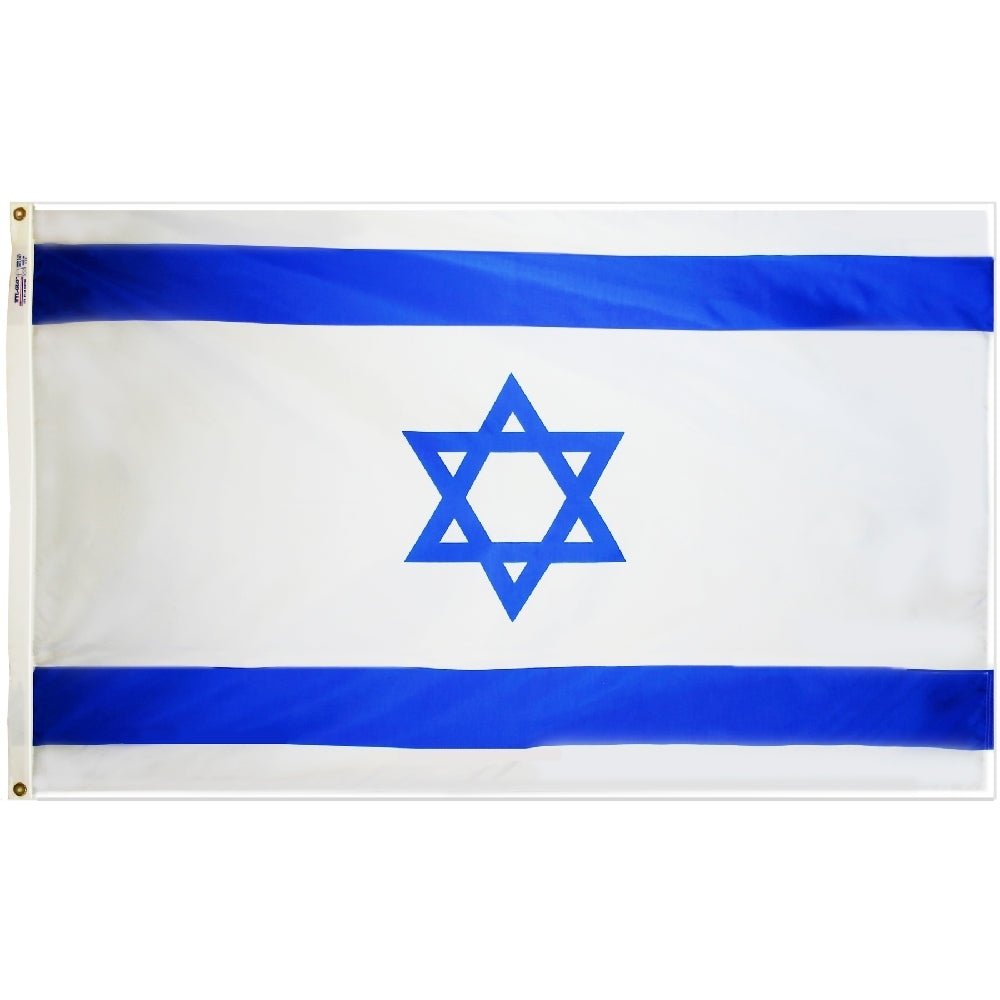Israel
Israel
Couldn't load pickup availability
Israel 3x5' nylon flag, canvas heading tape with brass grommets.
The flag of Israel is a significant and symbolic representation of the Jewish state, reflecting its history, culture, and religious heritage. The flag features a white field with two horizontal blue stripes near the top and bottom edges. In the center, there is a blue Star of David (Magen David). Each element of the flag holds deep meanings:
Blue and White Colors
- Biblical Inspiration: The colors blue and white are inspired by the Tallit, the traditional Jewish prayer shawl. The Tallit is typically white with blue stripes, symbolizing purity and devotion.
- Blue Color: The specific shade of blue, known as Tekhelet, has historical and religious significance. It is mentioned in the Torah and was used in ancient times for the dye of the fringes (tzitzit) of the prayer shawl. Tekhelet is associated with divine commandments and spiritual connection.
Star of David (Magen David)
- Jewish Identity: The Star of David is a universally recognized symbol of Judaism and Jewish identity. It has been used in Jewish communities for centuries and is often associated with Jewish heritage and culture.
- Symbolism of Unity: The six-pointed star, formed by two interlocking triangles, symbolizes the connection between God and humanity, the merging of the spiritual and physical worlds, and the unity of the Jewish people.
- Modern Significance: The Star of David became an emblem of the Zionist movement in the late 19th century, representing the aspirations for a Jewish homeland. Its central position on the flag underscores its importance as a symbol of national identity.
Historical Context
- Design Origin: The flag's design was first proposed at the First Zionist Congress in 1897. It was chosen to represent the Zionist movement's goal of establishing a Jewish homeland in Palestine.
- Official Adoption: The flag was officially adopted on October 28, 1948, shortly after the establishment of the State of Israel on May 14, 1948. It was designed to reflect both the ancient heritage and modern aspirations of the Jewish people.
Cultural and Religious Significance
- Connection to Jewish Tradition: The flag's elements are deeply rooted in Jewish tradition, history, and religious practices, reflecting the continuity and resilience of Jewish identity.
- National Symbol: As the national flag, it embodies the sovereignty and unity of the State of Israel and its people. It is flown on public buildings, during national holidays, and at significant events, symbolizing national pride and solidarity.
Modern Usage
- Symbol of the State: The flag is a prominent feature in Israeli public life, representing the state in official capacities both domestically and internationally.
- Jewish Diaspora: It is also a symbol of connection for Jewish communities around the world, linking them to the State of Israel and its cultural and religious heritage.
In summary, the flag of Israel is a powerful symbol of Jewish identity, heritage, and national pride. Its design elements—the blue and white colors and the Star of David—are deeply rooted in Jewish tradition and history, reflecting the spiritual, cultural, and historical connections of the Jewish people to their homeland.
Share










